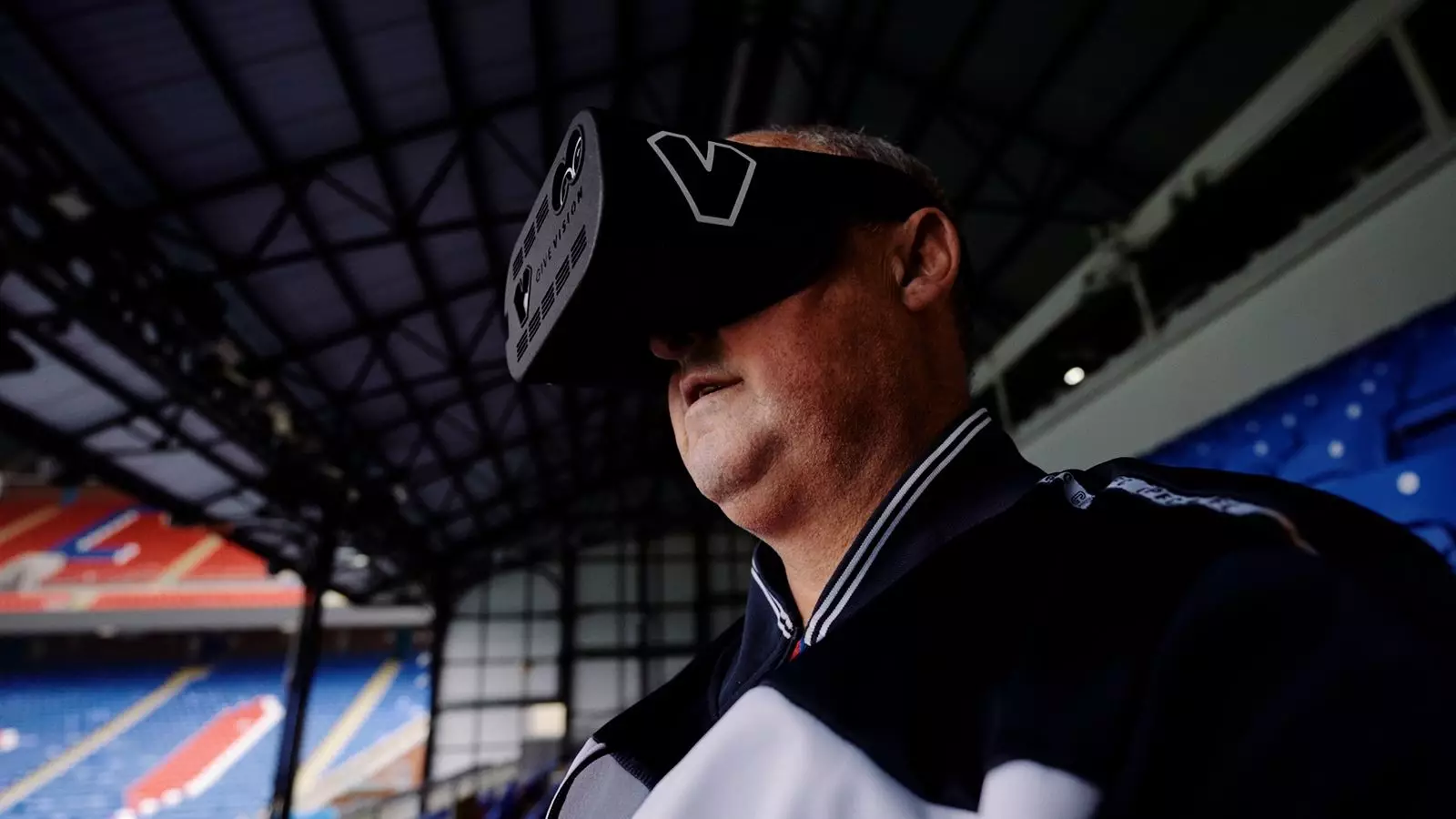In recent years, the conversation surrounding accessibility in sports has gained significant traction. Sports organizations are increasingly recognizing the need to cater to all fans, including those with disabilities. Crystal Palace Football Club has taken a pioneering step in this direction by being the first club worldwide to implement permanent assistive technology for fans with visual impairments. The introduction of the Give Vision headset not only marks a significant advancement in fan experience but also sets a new precedent that other clubs may follow.
For many fans, attending a live sporting event is more than just a game; it’s an emotional experience filled with camaraderie, excitement, and collective joy. Unfortunately, this experience can be significantly hampered for individuals with visual impairments. Neale Ormston’s story exemplifies this plight. A lifelong Crystal Palace fan, he found himself contemplating giving up his season ticket due to the challenges posed by his recent sight loss. His situation reflects a harsh reality faced by approximately two million people in the UK who live with sight loss.
The frustration of not being able to fully participate in the game can lead to feelings of isolation. However, the Give Vision headset has changed the narrative for fans like Neale, reigniting their passion for the sport. The technology is not merely a device but a bridge that reconnects fans with the beautiful game.
The Give Vision technology operates through a private 5G network, ensuring that fans can enjoy a seamless viewing experience while seated in the stadium. The headset offers dual functionality: it operates as a large magnifying glass and streams live footage from the game. This unique combination serves to enhance the matchday experience immensely.
Users benefit from a broader perspective of the game’s dynamics, which was once inaccessible. Joanna Liddington from Give Vision describes this technology as similar to the way hearing aids enhance sound perception. For fans with some existing vision, the headset stimulates photoreceptor cells in the retina, opening avenues for re-engaging with the vibrant spectacle of live football.
The Broader Implications for Accessibility
Crystal Palace’s initiative has broader implications for accessibility in sports. As Sharon Lacey, the chief operating officer, noted, there is significant interest from other Premier League clubs in replicating this technology. Making sports more inclusive is not just a moral obligation; it can foster a richer, more diverse fanbase that contributes to the atmosphere and culture of the sport.
The NHS states that approximately one in 34 people in the UK are suffering from some form of sight loss, with around 340,000 individuals registered as being blind or partially sighted. By introducing technologies like Give Vision, clubs do not merely gain a competitive edge in inclusivity; they embark on a movement aimed at making sports truly accessible to everyone.
Challenges and Future Prospects
Despite its revolutionary nature, implementing this technology is not without challenges. The deployment of a robust 5G network at the stadium is essential for real-time streaming. According to Sam Jackman from Shared Access, WiFi would not suffice for the demands of this technology. Therefore, ensuring that all stadiums have the necessary infrastructure is imperative for creating equitable experiences for visually impaired fans.
Looking ahead, the integration of such technology has the potential to evolve further. Innovations in augmented reality and artificial intelligence could enhance the capabilities of devices like the Give Vision headset, broadening the horizons for fan engagement. As clubs strive to create environments where every individual feels welcome and included, technology will play an increasingly vital role.
Crystal Palace’s commitment to enhancing accessibility is an inspiring case study in the realm of sports. The launch of the Give Vision headset reinforces the idea that sports should be inclusive and should cater to the needs of all fans. For other organizations, the takeaway is clear: by investing in technology that enhances the fan experience, they can cultivate a vibrant community that thrives on diversity and inclusivity. As we embrace these advancements, the hope is that they herald a new era in which no fan needs to feel left out, no matter their visual capabilities.


Leave a Reply